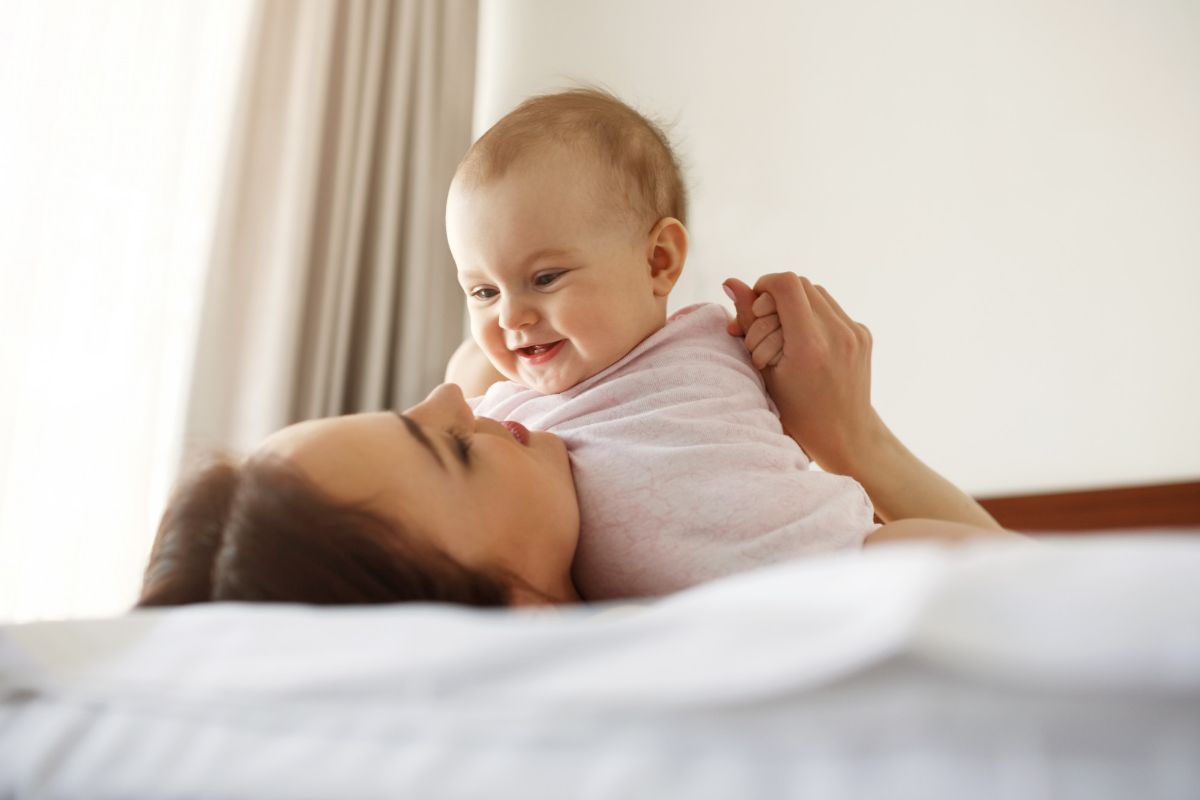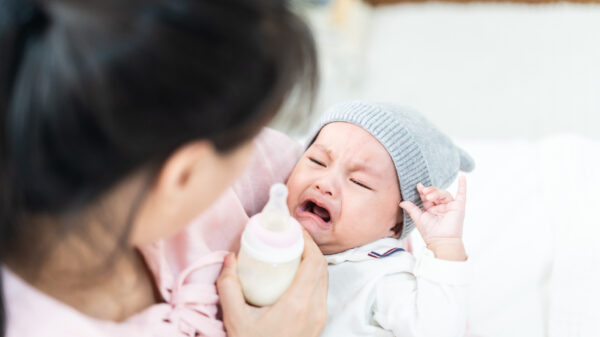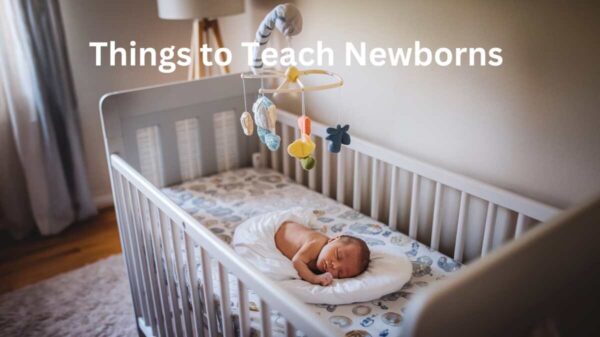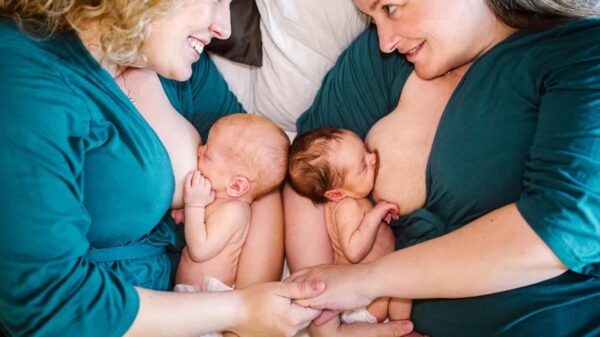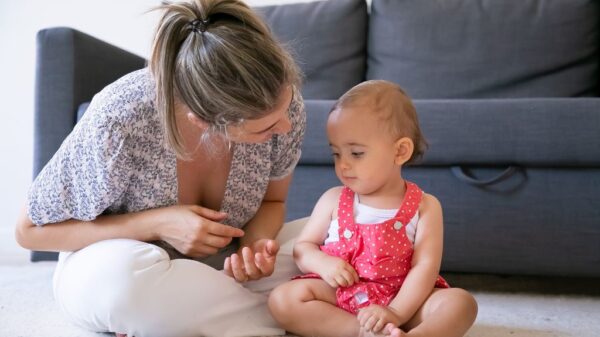Although bringing a new member into the family is an exciting and happy occasion, it’s normal for parents to wonder when to make certain adjustments. Selecting the right time to move their child from the nursery to their Room is a common problem that many parents encounter. Numerous factors play a role in this critical decision, including the baby’s developmental milestones and the parents’ preferences. In this When to Move Baby to Own Room, we’ll go over the most important factors to take into account when moving your baby into their Room so that it’s a smooth and cozy experience for both parents and young children.
Understanding When to Move Baby to Own Room
1. Newborn Sleep Patterns
Newborns have distinct sleep cycles that are typified by shorter sleep durations, typically lasting between two and four hours. They require more frequent feedings, and they frequently experience interrupted sleep. Babies may find comfort in being near their parents at this time, which makes feeding more accessible and provides comfort. During this phase, it is crucial to think about how realistic it will be to move a newborn into their Room. Having the baby near the parents helps ease the burden of nighttime care because of the baby’s frequent waking and feeding needs.
2. Changes in Sleep Cycles Over Time
Infants’ sleep habits change as they get older. Many babies start to exhibit more consolidated sleep around the age of three to four months, with longer stretches of sleep at night and more consistent nap schedules. At this crucial point, parents should consider putting the infant in their Room. The change in sleep patterns indicates increased sleep independence. It is a good time for parents to transition because the baby can sleep for extended periods without requiring constant attention.
3. Building Independence
Their cognitive development greatly influences a baby’s capacity to develop independence. Babies begin to feel secure and attached as they get older. Babies gradually grow accustomed to spending brief periods alone themselves. A baby may be prepared to move into their Room when they exhibit signs of developing independence, such as being content during short separations or playing by themselves. This autonomy may facilitate a more seamless transition.
4. Developing Self-Soothing Skills
A baby that has developed self-soothing skills is able to soothe themselves and go back to sleep without the need for quick parental assistance. As babies learn to find comfort in their surroundings and familiar objects, this skill usually develops over time. Self-soothing ability is closely linked to an infant’s ability to tolerate short bursts of nighttime wakefulness without help from parents. The infant might be more capable of sleeping in their Room as these abilities develop.
Creating a Safe Sleep Environment
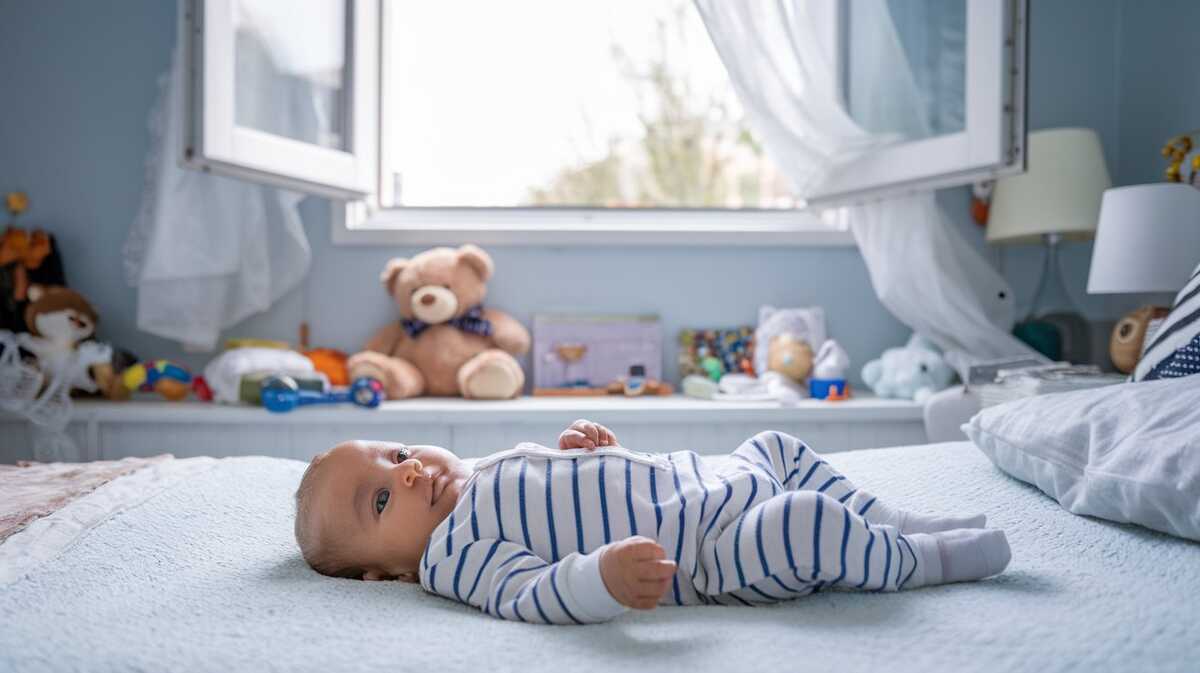
1. Sleeping on the Back
The infant must baby sleep on their back to lower the risk of SIDS (Sudden Infant Death Syndrome). By maintaining an open airway, this sleeping position helps guarantee that the baby can breathe without restriction. The baby’s risk of respiratory problems and SIDS is decreased by sleeping on their back because they are less likely to rebreathe their own exhaled air.
2. Firm Mattress
A firm mattress in the crib gives the infant a secure and comforting place to sleep. It matters for a number of reasons. First off, a firm mattress keeps the surface level and even lowers the chance of suffocation. Second, it guarantees that the baby’s face doesn’t get in the way while they sleep, avoiding unintentional obstruction and encouraging a secure sleeping environment.
3. No Soft Bedding
Babies can suffocate on soft bedding items like bumper pads, stuffed animals, and pillows. If these objects come into contact with the baby’s face while they are sleeping, they may obstruct their airway. It’s critical to avoid soft bedding in the crib to reduce the possibility of unintentional suffocation and to guarantee a transparent and secure sleeping area.
4. No Loose Bedding
For the baby’s safety when they sleep, it is imperative that fitted sheets fit snugly and that no loose bedding is present. Unsecured blankets or sheets can cover a baby’s face, causing respiratory problems or raising the risk of SIDS. It is known as loose bedding. Reducing potential hazards and promoting a safe sleep environment is achieved by keeping loose bedding out of the crib.
5. Temperature Control
The baby’s health depends on the room temperature being kept at a comfortable level. Because they are sensitive to temperature changes, infants may find it challenging to regulate their body temperature in an overly hot or cold environment. Making sure the infant is dressed appropriately for bed helps prevent overheating and maintain a comfortable temperature while they sleep.
6. Avoid Overheating
One known risk factor for SIDS, or sudden infant death, is overheating. It’s critical to make sure the infant is balanced because wearing too many layers can raise body temperature. Maintaining adequate ventilation in the Room is also crucial to avoiding overheating. One way to lower the risk of sleeping with an elevated body temperature is to create a balanced and comfortable sleeping environment.
Parental Readiness and Preferences
1. Recognizing Signs of Readiness
In order to detect when their baby is ready to move into their Room, parents must be emotionally prepared. These indicators could be the infant displaying some independence, having the capacity for self-soothing, and adhering to a regular sleep schedule.
2. Coping with Separation Anxiety
Dealing with separation anxiety is common when a baby is moved to a room for both the parents and the child. Understanding and overcoming the emotional obstacles that can surface during this shift are components of emotional preparedness. It entails establishing a nurturing atmosphere and assisting the infant gradually in acclimating to being left alone.
3. Gradual Transition
A gradual transition strategy, in which the infant is gradually brought to their Room, is preferred by many parents. For naps or bedtime, this can mean starting with shorter stays in the Room and progressively lengthening them as the baby gets more at ease. This approach promotes emotional readiness by letting the infant and parents adjust at a rate that works for them.
4. CIO (Cry It Out) Method
However, some parents choose the cry-it-out (CIO) approach, which entails allowing the infant to learn how to self-soothe and go to sleep on its own, even if it requires some brief crying. It can be challenging to hear a baby cry, so parents using this method must be emotionally ready. Advocates counter that it teaches infants how to sleep through the night.
Benefits of Transitioning at the Right Time
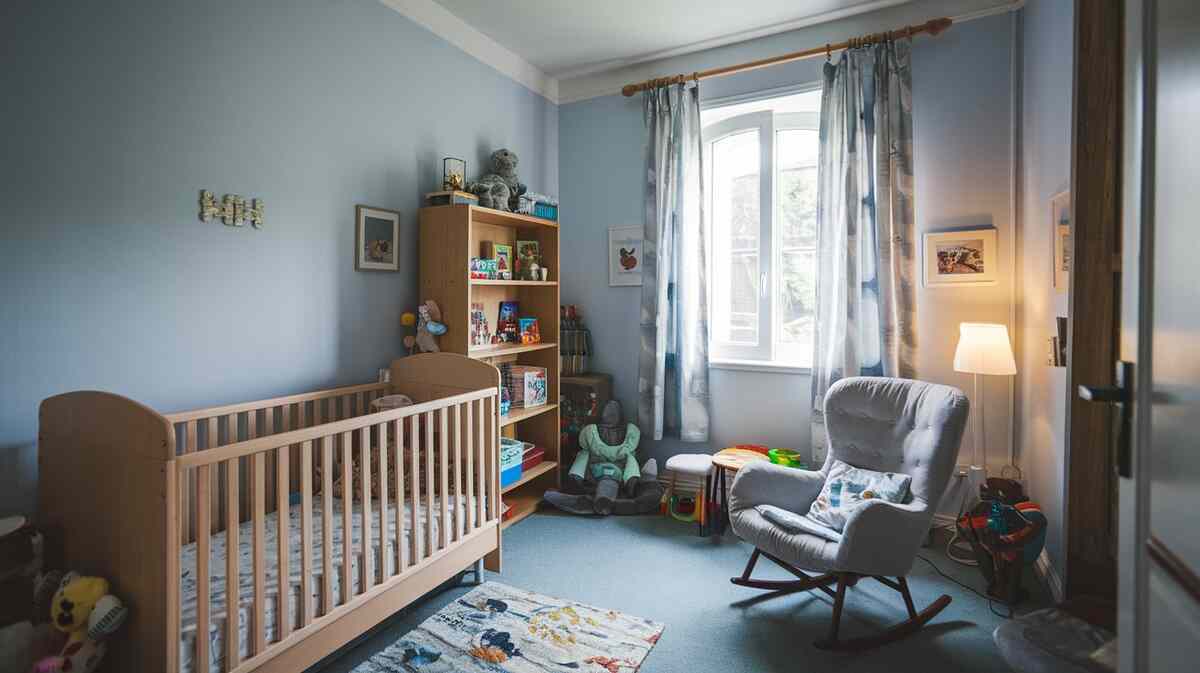
1. Improved Sleep Quality
Both the baby and the parents may experience improved sleep quality when the baby moves into their Room. Fewer outside sounds could agitate the infant, making the space calmer. As a result, parents can sleep better at night without becoming overly aware of every noise their child makes. Everyone involved may benefit from more uninterrupted and restorative sleep as a result of these fewer disruptions.
2. Establishment of Independence
The baby’s journey to independence begins when they move into their Room. The process entails teaching them how to soothe themselves and go to sleep on their own. These self-soothing abilities help the baby develop healthier sleeping habits as they get older. Sleep independence helps infants develop a sense of freedom by enabling them to navigate independently through short nighttime awakenings and fall back asleep.
3. Parental Sleep Quality
When the baby is in their Room, parents frequently notice an improvement in the quality of their sleep. The chance that parents will wake up at every whimper or sound from their infant is decreased by the separation. Parents can sleep for more extended periods with less sensitivity to minor disruptions, which may improve their general well-being and sense of restfulness.
4. Increased Parental Privacy
The choice to have the infant in their Room gives the parents more seclusion and personal space. Maintaining a healthy balance between raising the child and fostering the parent-child bond is made more accessible by this separation. Intimacy and connection are fostered when parents can concentrate on their relationship in a space specifically designated for the baby.
5. Establishment of Routine
Establishing a bedtime routine can be significantly aided by moving a baby to a different room. Babies benefit from practices because they are predictable and help them learn when it’s time to go to sleep. This routine could involve reading a bedtime story, taking a warm bath, or gently rocking. As the infant learns to associate these activities with bedtime, it facilitates a more seamless transition to sleep by signaling the body and mind to wind down.
6. Decreased Chance of SIDS
According to some research, during the first few months of life, room-sharing—where the infant sleeps in the parents’ Room but does not share a bed—may lower the risk of SIDS. But when the infant reaches a particular age and developmental stage, it might be time for them to move into their Room. Since it coincides with a lower risk of SIDS, this transition is frequently advised around the time the baby turns over or reaches six months of age.
Potential Challenges and How to Overcome Them
1. Sleep Regression
A baby may experience sleep regression if they move to a new sleep environment, which could lead to irregular sleep patterns, frequent nighttime awakenings, or trouble falling asleep. Remain steadfast and patient. To keep things comfortable, stick to your regular bedtime rituals. Before making the switch permanent, try to gradually transition the baby by letting them take some naps during the day in their Room
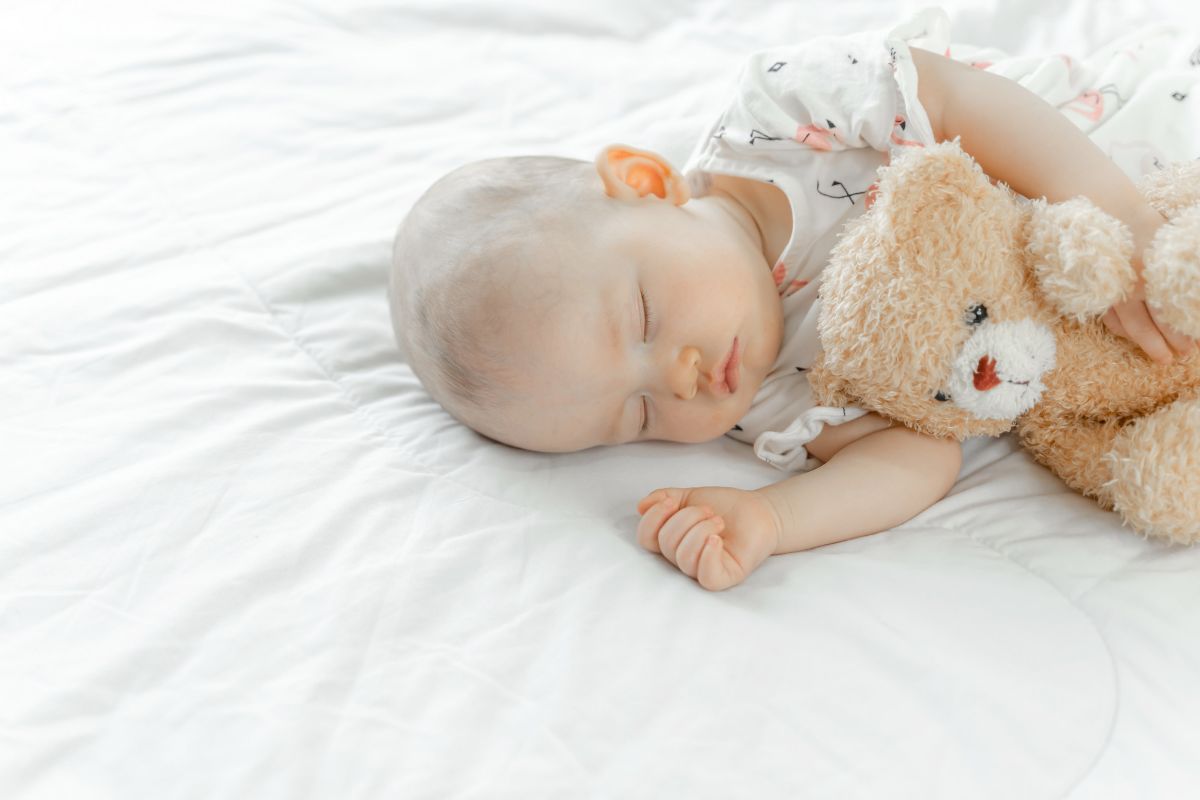
2. Nighttime Wake-Ups
The infant might wake up in the middle of the night and struggle to get used to the strange surroundings. Don’t pick up the baby right away; instead, comfort them. Use comforting actions to assist them in self-soothing, such as soft patting or shushing. Introduce a blanket or soft toy as a transitional item to help the child feel comfortable.
3. Parental Anxiety
Having the baby away from them can cause parents to feel guilty or anxious, particularly if the baby has been sharing a room with them since birth. Parents and babies should adjust to the change gradually. Gradually increase the amount of time they spend in their Room from brief intervals during the day to the evening. To ease parents’ worries about keeping an eye on their infant’s well-being, hold a baby monitor in the nursery.
4. Adjustment Period
The newborn and parents need some time to get used to their new sleeping schedule. Maintain the new routine’s consistency. Plan on a period of gradual adjustment and anticipate some initial difficulties. Throughout this adjustment, provide the infant with consolation and assurance. To foster a sense of security, develop a regular bedtime routine.
5. Separation Anxiety
If the infant is accustomed to being close to you all the time, they might get anxious when they have to go. Gradual disengagement can reduce this fear. To strengthen the bond, spend more time in the waking hours with the baby. Establish a regular bedtime routine with activities that provide comfort in order to foster a positive association with their Room.
6. Parental Sleep Interruptions
When a baby is in a different room, parents might be concerned that they won’t notice their needs or cries. To remain aware of your baby’s sounds and movements, use a trustworthy baby monitor. Make sure the audio and, if available, video feeds are crystal clear on the monitor. This technology allows the baby to sleep on their own while also assisting parents in responding quickly when necessary.
Expert Advice and Recommendations
1. Pediatrician Consultation
Parents who are looking for advice on when to move their baby into their Room can consult a pediatrician. Based on the baby’s needs, developmental stage, and overall health, they can provide tailored recommendations. Arrange a meeting with the pediatrician to talk about the baby’s preparedness for the change. Take into account elements like the infant’s sleep habits, general health, and any particular developmental issues.
2. Individualized Assessment
Experts in child development stress the value of a customized strategy that takes into account each baby’s particular temperament and developmental milestones. Examine the baby’s character, sleep habits, and developmental milestones. Observe the baby’s cues to determine when they’re ready for greater independence, then modify the transition to suit their requirements.
3. Gradual Transition
Many experts advise a gradual transition to help the baby and parents get used to the new sleeping arrangement. When it comes to daytime naps, begin by introducing brief intervals of time spent in the infant’s Room. Expand this to include sleeping at night gradually. With this systematic approach, the infant can adjust to their new surroundings at their own pace.
4. Communication with Sleep Specialists
Seeking advice from sleep specialists or certified sleep consultants can be helpful for parents who are experiencing particular sleep-related issues. If the infant has trouble acclimating to the new sleeping environment, consider consulting with pediatric sleep specialists. They can offer information on individualized plans and sleep training techniques.
5. Safety Considerations
Experts offering transitional advice have one thing on their minds: safety. It is essential to create a secure sleeping environment. Prior to putting the infant in their Room, baby-proof the area, look for potential safety risks, and follow recommended sleep practices. It entails using a firm mattress, securing furniture, and regulating room temperature.
Conclusion
When is the best to move your baby to their Room? It all depends on when you consider safety concerns, developmental milestones, and parental readiness. You can confidently navigate this transition and promote your baby’s overall well-being by creating a healthy sleep environment and taking into account the unique needs of your child and family. Remember that every child is special and that there isn’t a one-size-fits-all strategy. Rely on your intuition, educate yourself, and relish the fulfilling experience of becoming a parent.

